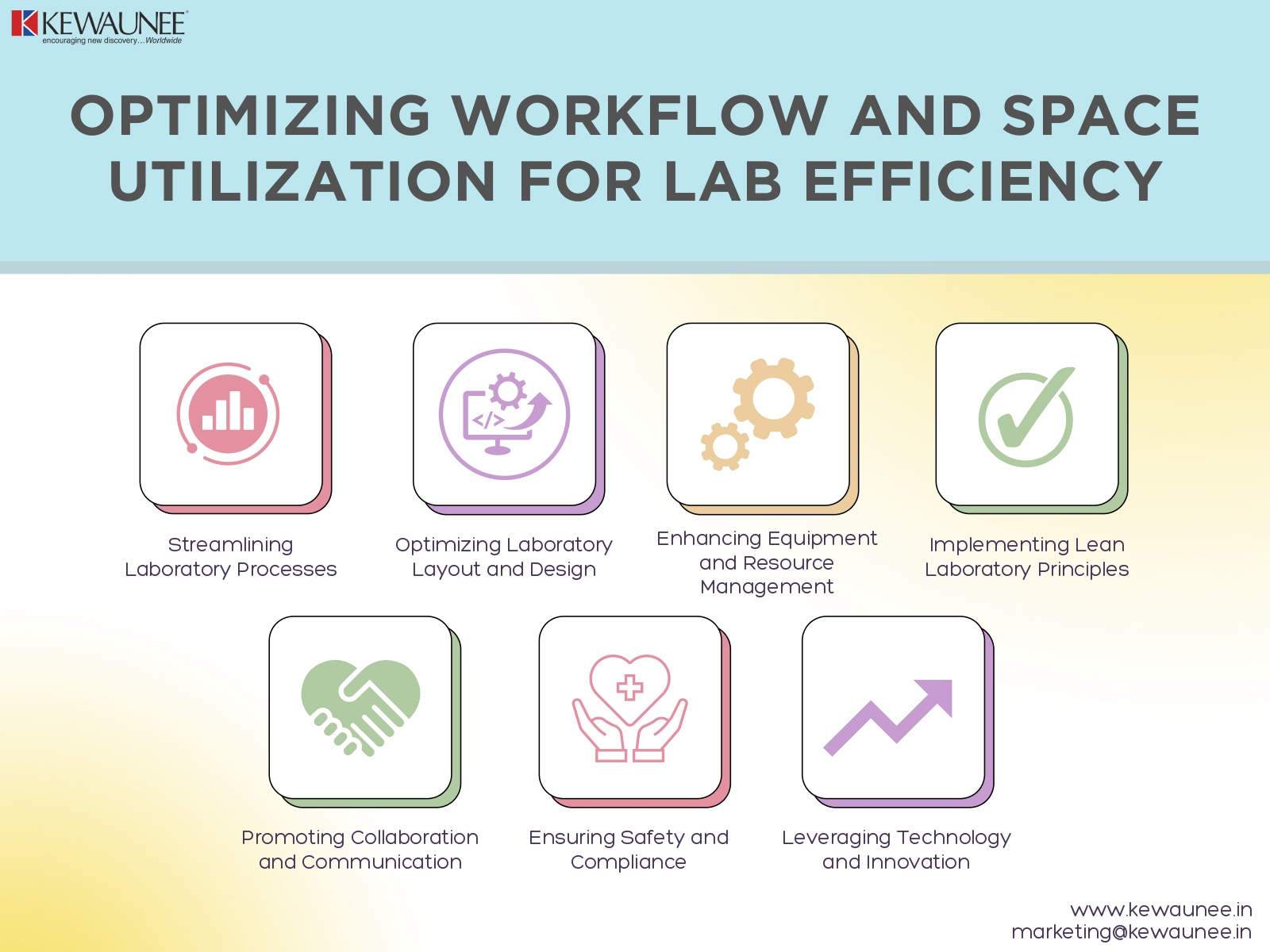Optimizing Workflow and Space Utilization for Lab Efficiency
Efficiency is key in research and scientific workflows, as it directly impacts productivity, resource utilization, and cost-effectiveness. Laboratories often face challenges in optimizing workflow and space utilization, leading to inefficiencies.
In this blog, we will explore strategies for maximizing lab efficiency through effective workflow and space utilization. By implementing these strategies, laboratories can enhance productivity, streamline operations, and achieve better outcomes.
Analyzing Current Workflow and Space Utilization
To improve lab efficiency, it is crucial to analyze the existing workflow processes and space utilization. By assessing the workflow, identifying bottlenecks, and evaluating space usage, laboratories can pinpoint areas that require improvement.
Gathering feedback from laboratory staff and stakeholders provides valuable insights to identify pain points and tailor solutions accordingly.
Streamlining Laboratory Processes
Standardizing protocols and procedures is essential for efficient workflow practices. Documenting and communicating standard operating procedures (SOPs) ensure consistent practices across the laboratory. Training staff on these procedures enables them to perform tasks efficiently.
Leveraging automation and technology, such as laboratory information management systems (LIMS) and robotics, streamlines repetitive tasks, saving time and effort.
Optimizing Laboratory Layout and Design
Analyzing workflow patterns and process flows helps identify optimal sequences and dependencies. By redesigning the layout, laboratories can minimize movement and improve efficiency.
Ergonomic considerations play a vital role in ensuring proper workstation design, equipment placement, and staff comfort and safety. A well-designed laboratory layout enhances productivity and reduces the risk of errors and accidents.
Enhancing Equipment and Resource Management
Assessing equipment needs and usage patterns allows laboratories to identify essential equipment and eliminate underutilized items. Implementing scheduling and reservation systems for shared equipment optimizes their usage.
Centralizing and organizing supplies and consumables with dedicated storage areas and inventory management systems prevent wastage and streamline procurement processes.
Implementing Lean Laboratory Principles
Applying lean management principles to laboratory operations helps identify waste and inefficiencies. Value stream mapping enables laboratories to visualize workflow processes and identify areas of improvement.
Continuous improvement techniques like Kaizen promote problem-solving and efficiency gains. Just-in-Time (JIT) inventory management reduces inventory levels, minimizes waste, and optimizes storage space.
Promoting Collaboration and Communication
Creating a culture of collaboration and knowledge sharing fosters innovation and efficiency. Designating collaboration spaces and implementing digital platforms for communication and information sharing facilitate cross-functional interactions.
Regular meetings and feedback sessions provide opportunities for project updates, problem-solving, and staff engagement. Effective collaboration and communication enhance teamwork and streamline processes.
Ensuring Safety and Compliance
Integrating safety measures into workflow processes is essential to maintain a safe working environment. Proper training on safety protocols and hazard awareness ensures staff adherence to safety guidelines.
Conducting regular safety inspections and audits identifies potential risks and ensures compliance with regulatory requirements. Documenting and maintaining necessary documentation and records are vital for safety and quality assurance.
Leveraging Technology and Innovation
Exploring new technologies and tools can significantly enhance lab efficiency. Adopting digital solutions for data management and analysis streamlines processes and improves accuracy. Emerging technologies like artificial intelligence (AI) and machine learning (ML) offer advanced capabilities for data processing and decision-making.
Implementing sustainability initiatives, such as incorporating green technologies for energy efficiency and resource conservation, demonstrates a commitment to environmental responsibility.
Conclusion
Maximizing lab efficiency is crucial for research and scientific workflows. By implementing strategies for optimizing workflow and space utilization, laboratories can enhance productivity, reduce costs, and achieve better outcomes.
Analyzing current workflow and space utilization, streamlining processes, optimizing layout and design, enhancing equipment and resource management, implementing lean principles, promoting collaboration, ensuring safety and compliance, leveraging technology and innovation, and learning from case studies are key steps towards maximizing lab efficiency.
Embrace these strategies to create a more efficient and effective laboratory environment.
Comments are closed.











